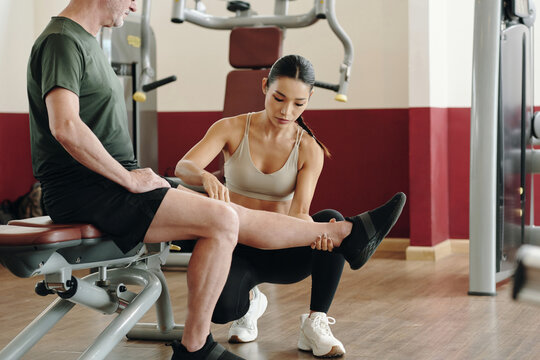

The physical therapy profession is evolving. It now includes analysing movement and predicting injury risk, determining areas of potential injury, addressing strength imbalances, and improving posture, performance, and health. Basically, optimising your movement. Physiotherapists are often identified by their ability to help people rehabilitate injuries, but did you know they can help you prevent an injury before it happens? Although rehabilitating injuries is a significant component of physiotherapy, these health care providers are able to provide services far beyond the injured population.
Physiotherapists are experts in the way the human body moves. They are able to provide a unique perspective on purposeful, precise and efficient movement across the lifespan by evaluating the movement system through their expertise in mobility and locomotion. From this evaluation, therapists are able to design a customised and integrated plan of exercise to achieve the individual’s goal-directed outcomes.
Endurance / cardiovascular – These exercises work your entire circulatory system including the heart and lungs. They encourage efficient delivery of blood, oxygen, and important nutrients to muscles and vital organs. By increasing your heart rate and making the body work harder, you can help create a stronger and more efficient system.
Endurance / cardio exercises are also important to boost your metabolism and burn more calories which can assist with weight-loss. Activities such as walking, running, swimming, cycling, dancing and skating can all provide these beneficial effects. We start all our training at an intensity that is appropriate to your current fitness level and progress to more vigorous activities.
Flexibility – These exercises are important to maintain and/or improve the ROM of muscles and joints. Flexible muscles and joints allow us to get into and out of different positions comfortably. They also help to prevent injury by absorbing forces and dispersing energy. Flexible muscles work efficiently in both static and dynamic situations. When combined with appropriate strength, a flexible muscle can produce greater torque which leads to greater power output.
Strength – Muscle strength is what keeps you upright and moving. Sufficient strength is important for posture, balance, and all your daily activities. Strength training helps you build lean muscle mass, increase metabolism, and reduce body fat. Strength training can be accomplished by using weights, resistance bands, or even your own body weight.
Balance – Balance training leads to improved performance by increasing both agility and stability. This type of exercise is appropriate for a wide range of individuals. For athletes wanting to improve their sport performance, to individuals recovering from surgery, to those who would like to prevent falls or the use of a cane/walker; proficiency in this area is very important.
Prevent injury, be proactive!
Prepare individuals before surgery
Promote health, fitness and general wellness
Improve athletic performance
Help to reduce fall risk
Chronic-pain education and management
Posture
We only have one body, so why not utilise our experts in the human movement system to keep things moving? Think of it like you would your regular dental cleanings. Many people typically go to the dentist one to two times per year to prevent oral health issues and to identify potential problems. Your physical therapist can provide the same type of service, by keeping you moving and doing the things you love to do!
Copyright © Physio Jonny 2025. All rights reserved.